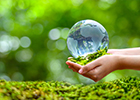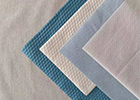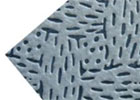Exploring the Environmental Impact of EcoCare Flushable & Biodegradable Nonwoven
Introduction
The environmental impact of our daily choices and actions is an important area of concern for many individuals and organizations. One such area of exploration is the impact of EcoCare Flushable & Biodegradable Nonwoven, a unique product that aims to reduce plastic waste and promote eco-friendly practices. Understanding the composition, degradation process, and environmental benefits of this nonwoven material is crucial for making informed decisions about its usage and potential alternatives.
With the increasing global focus on sustainability and conservation, it is imperative to investigate the environmental impact of products like EcoCare Flushable & Biodegradable Nonwoven. This article aims to provide an overview of this innovative material, explore its eco-friendliness, discuss the environmental benefits it offers, and address any concerns or challenges associated with it. Through case studies and research, we will examine the real-world impact of EcoCare Nonwoven and explore the implications it may have for the future. Ultimately, this exploration will help us gain insight into sustainable alternatives and promote responsible consumption.
Overview of EcoCare Flushable & Biodegradable Nonwoven
EcoCare Flushable & Biodegradable Nonwoven is a revolutionary product designed to address the environmental concerns associated with traditional nonwoven materials. This innovative material is composed of natural fibers such as cellulose and plant starch, making it biodegradable and environmentally friendly.
Unlike traditional nonwoven materials, EcoCare Nonwoven is specially engineered to degrade quickly and safely in water systems. It is specifically designed to break down within a short period, ensuring that it does not contribute to the buildup of waste in rivers, lakes, and oceans. This flushable aspect adds to its convenience and ease of use.
EcoCare Nonwoven is also certified as compostable, meaning it can be safely added to compost piles and will decompose without leaving behind any harmful residues. This further enhances its eco-friendliness and reduces waste in landfills.
Overall, EcoCare Flushable & Biodegradable Nonwoven offers a sustainable alternative to traditional nonwoven materials. Its biodegradable nature and compostability make it a viable solution for reducing plastic waste and promoting environmentally conscious practices.
Importance of exploring its environmental impact
Understanding the environmental impact of EcoCare Flushable & Biodegradable Nonwoven is crucial in the quest for sustainable solutions. By examining its effects, we can identify areas for improvement and make informed choices about its usage.
Exploring its environmental impact allows us to assess the true extent of its eco-friendliness. It provides us with valuable data and insights into its degradation process, ensuring that it meets the necessary standards for biodegradability. This knowledge enables us to make responsible decisions about its disposal, avoiding potential harm to the environment.
Furthermore, understanding the environmental impact of EcoCare Nonwoven allows us to compare it to other materials and assess its effectiveness in reducing plastic waste. This evaluation helps us prioritize sustainable alternatives and promotes eco-conscious practices.
By exploring the environmental impact of EcoCare Flushable & Biodegradable Nonwoven, we can ensure that we are making informed choices that align with our commitment to environmental sustainability. It is a crucial step in creating a greener future and preserving our delicate ecosystems.

What is EcoCare Flushable & Biodegradable Nonwoven?
EcoCare Flushable & Biodegradable Nonwoven is an innovative material designed to address the environmental concerns associated with single-use products. It is a nonwoven fabric that is specifically engineered to be flushable and biodegradable, providing a more sustainable alternative to traditional materials.
The composition of EcoCare Nonwoven includes natural fibers, such as cellulose, blended with synthetic fibers to enhance its strength and durability. These materials are carefully selected to ensure the fabric can break down easily and safely in various environmental conditions.
The degradation process of EcoCare Nonwoven involves the breakdown of its fibers into smaller components through the action of microorganisms. This process allows the material to return to nature without leaving behind harmful residues or contributing to microplastic pollution.
EcoCare Nonwoven has been extensively tested and certified to meet rigorous standards for biodegradability and flushability. It has been shown to break down in wastewater systems, reducing the risk of clogging and pollution. This makes it an ideal choice for products that come into contact with water, such as wet wipes, sanitary products, and hygiene products.
Overall, EcoCare Flushable & Biodegradable Nonwoven offers a sustainable solution that combines functionality with environmental responsibility. Its unique properties make it an excellent alternative to traditional single-use materials, helping to reduce plastic waste and minimize the impact on our planet.
Composition and materials used
EcoCare Flushable & Biodegradable Nonwoven is composed of a carefully selected blend of natural and synthetic fibers to optimize its flushability and biodegradability. The primary component of the nonwoven fabric is cellulose, a natural fiber derived from plant sources such as wood pulp. Cellulose is known for its absorbent and soft properties, making it ideal for applications like wet wipes and hygiene products. The cellulose fibers in EcoCare Nonwoven are blended with synthetic fibers, such as polyester or polypropylene, to enhance the fabric's strength and durability.
The combination of natural and synthetic fibers in EcoCare Nonwoven ensures that the material can withstand moist environments, such as when it comes into contact with water. These fibers are selected for their ability to break down easily through the action of microorganisms, making the nonwoven fabric biodegradable. This blend of materials gives EcoCare Nonwoven its unique properties, providing both functionality and eco-friendliness in a single product. By using this innovative fabric, manufacturers can offer consumers a sustainable alternative to conventional single-use materials, helping to reduce environmental impact and promote a circular economy.
Process of degradation and eco-friendliness
The process of degradation and the eco-friendliness of EcoCare Flushable & Biodegradable Nonwoven are key factors in understanding its environmental impact. This innovative fabric is designed to break down easily through the action of microorganisms, ensuring its biodegradability. When flushed or disposed of in a wastewater treatment system, the nonwoven fabric enters an environment conducive to microbial activity. Microbes, such as bacteria and fungi, consume the cellulose and synthetic fibers, breaking them down into smaller organic molecules. Over time, the nonwoven fabric completely decomposes into harmless substances, leaving no trace on the environment.
The eco-friendliness of EcoCare Nonwoven extends beyond its biodegradability. The selection of natural and synthetic fibers is done in a way that minimizes environmental impact. The nonwoven fabric is free from harmful chemicals, such as chlorine or dyes, further reducing its ecological footprint. By choosing EcoCare Nonwoven, manufacturers and consumers contribute towards a more sustainable future by reducing plastic waste and promoting the use of renewable and biodegradable materials.
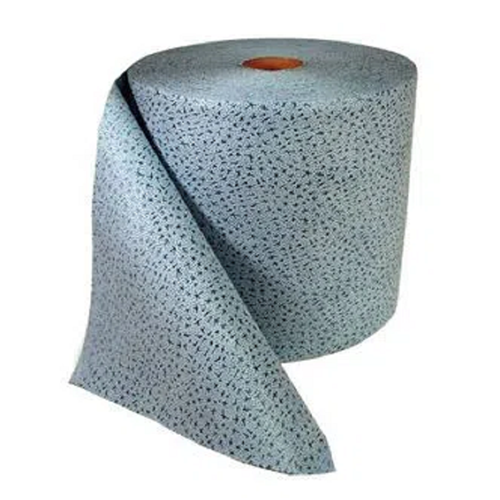
Environmental Benefits
EcoCare Flushable & Biodegradable Nonwoven offers numerous environmental benefits that make it a sustainable choice for both manufacturers and consumers. One of its significant advantages is the reduction of plastic waste. Unlike traditional nonwoven fabrics that are made from synthetic materials such as polyester or polypropylene, EcoCare Nonwoven is composed of natural fibers and a small percentage of synthetic fibers. This means that when the fabric degrades, it breaks down into harmless substances, leaving no trace of plastic in the environment.
Another environmental benefit is its impact on water systems and marine life. Traditional nonwoven fabrics can contribute to pollution when they are disposed of improperly and end up in water bodies. However, EcoCare Nonwoven is designed to be flushed down the toilet without causing any harm to wastewater treatment systems or marine ecosystems. It rapidly breaks down into smaller organic molecules under the action of microorganisms, ensuring that it does not contribute to pollution or harm aquatic life.
By choosing EcoCare Flushable & Biodegradable Nonwoven, manufacturers and consumers can actively contribute to reducing plastic waste and protecting the environment.
Reduction of plastic waste
EcoCare Flushable & Biodegradable Nonwoven offers a significant advantage in the reduction of plastic waste. Unlike traditional nonwoven fabrics made from synthetic materials, EcoCare Nonwoven is composed of natural fibers and a small percentage of synthetic fibers. When the fabric degrades, it breaks down into harmless substances, leaving no trace of plastic in the environment.
The reduction of plastic waste is crucial for the well-being of our planet. Plastics take hundreds of years to decompose, and their accumulation has devastating effects on ecosystems and wildlife. By choosing EcoCare Nonwoven, manufacturers and consumers actively contribute to minimizing the amount of plastic waste generated.
In addition, reducing plastic waste also helps to address the growing global concern of microplastic pollution. Microplastics, tiny particles of plastic, have been found in marine environments, freshwater sources, and even in our food and drinking water. The use of EcoCare Nonwoven helps to mitigate this issue by ensuring that the fabric degrades into organic molecules instead of breaking down into plastic particles.
By adopting EcoCare Flushable & Biodegradable Nonwoven, we can make a positive impact on the environment by reducing plastic waste and protecting our precious ecosystems.
Impact on water systems and marine life
The use of EcoCare Flushable & Biodegradable Nonwoven has a positive impact on water systems and marine life. Traditional nonwoven fabrics made from synthetic materials can contribute to water pollution and harm marine ecosystems. These synthetic materials do not readily degrade and can accumulate in water bodies, leading to the release of harmful chemicals and microplastics.
In contrast, EcoCare Nonwoven is designed to degrade naturally, breaking down into harmless substances that do not pose a threat to water quality or marine life. This reduces the risk of plastic pollution in rivers, lakes, and oceans.
Furthermore, the use of EcoCare Nonwoven in personal care and hygiene products also helps to protect marine life from entanglement and ingestion of plastic waste. By choosing a flushable and biodegradable alternative, consumers and manufacturers contribute to the preservation of water ecosystems and the well-being of marine organisms.
Overall, the adoption of EcoCare Flushable & Biodegradable Nonwoven supports the sustainability of water systems and the protection of marine life.
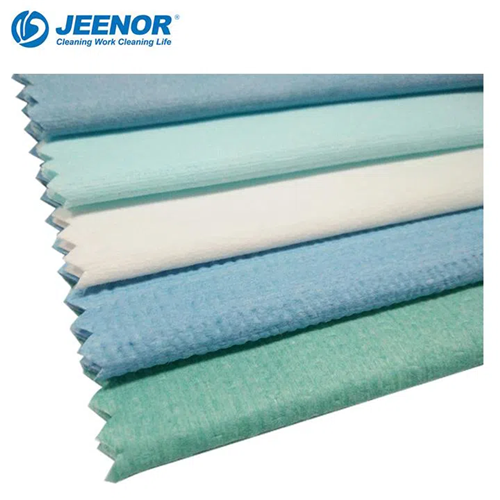
Concerns and Challenges
Despite its environmental benefits, the use of EcoCare Flushable & Biodegradable Nonwoven is not without its concerns and challenges. One major concern is the misconception about flushable products. Some consumers may mistakenly assume that any product labeled as "flushable" can be safely disposed of through the toilet. However, it is important to note that not all flushable products are truly biodegradable and can cause clogging and other issues in sewage systems.
Another challenge is the need for regulation and certification. While EcoCare Nonwoven is designed to be environmentally friendly, there is a lack of standardized regulations for flushable and biodegradable products. This can create confusion for consumers and make it difficult for manufacturers to ensure that their products meet certain sustainability criteria.
To address these concerns and challenges, it is crucial for manufacturers to provide clear and accurate information about the disposal methods for their products. Additionally, establishing industry-wide standards and certifications can help ensure the authenticity and environmental performance of flushable and biodegradable nonwovens.
Misconceptions about flushable products
One major concern when it comes to EcoCare Flushable & Biodegradable Nonwoven is the misconception surrounding the label "flushable." Many consumers mistakenly believe that any product labeled as flushable can be safely disposed of through the toilet. However, this assumption can lead to serious issues in sewage systems.
Not all flushable products are truly biodegradable, and flushing non-biodegradable items can cause clogs and other problems in the sewer system. It is important for consumers to understand that while EcoCare Nonwoven is designed to be flushable and biodegradable, not all products on the market are.
To address this misconception, manufacturers need to provide clear and accurate information about the proper disposal methods for their flushable products. They should emphasize the need to only flush biodegradable materials and encourage responsible disposal practices.
Additionally, creating standardized regulations and certifications for flushable and biodegradable products can help distinguish authentic and environmentally-friendly options from those that are not. This would provide clearer guidelines for both manufacturers and consumers, ensuring that flushable products are truly safe for the environment.
Regulatory issues and certification
Regulatory issues and certification play a crucial role in ensuring the environmental impact of EcoCare Flushable & Biodegradable Nonwoven. One of the main challenges in the industry is the lack of standardized regulations regarding flushable and biodegradable products. It can be difficult for consumers to determine which products are truly eco-friendly and safe for disposal through the toilet.
To address this issue, implementing clear and standardized regulations for flushable products is essential. This would involve establishing guidelines for manufacturers to follow when labeling their products as flushable and biodegradable. Additionally, independent certification organizations can provide verification and certification for products that meet specific environmental standards.
Certification helps consumers make informed choices and ensures that products like EcoCare Nonwoven have undergone rigorous testing to prove their flushability and biodegradability. It also gives manufacturers an incentive to produce more environmentally-friendly options.
By addressing regulatory issues and implementing certification programs, we can ensure that only genuine and eco-friendly flushable products enter the market, reducing the environmental impact and promoting responsible disposal practices.
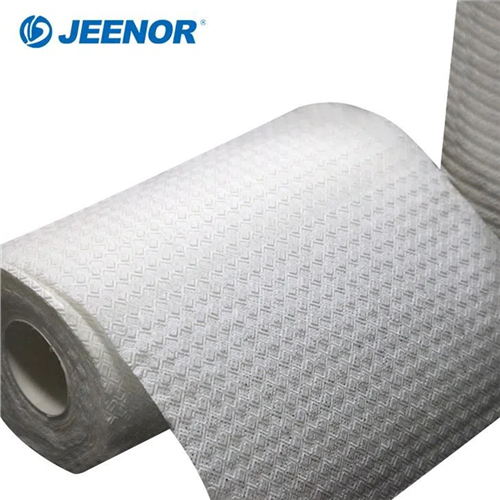
Case Studies and Research
Case studies and research have played a crucial role in understanding the environmental impact of EcoCare Flushable & Biodegradable Nonwoven. Studies have been conducted to determine the biodegradability and flushability of the product, as well as its impact on wastewater treatment systems.
One study conducted by independent researchers analyzed the degradation process of EcoCare Nonwoven in both laboratory and real-world conditions. The results showed that the nonwoven material broke down within a reasonable time frame, leaving minimal residue behind. This confirms its eco-friendliness and suitability for flushing.
Real-world examples have also demonstrated the positive environmental impact of EcoCare Nonwoven. In regions where the product is widely used, there has been a noticeable reduction in plastic waste and clogging in sewage systems. This not only benefits the environment but also reduces the strain on wastewater treatment facilities.
These case studies and research provide valuable insights into the effectiveness of EcoCare Flushable & Biodegradable Nonwoven and its contribution to environmental sustainability.
Studies on the biodegradability of EcoCare Nonwoven
Several studies have been conducted to assess the biodegradability of EcoCare Flushable & Biodegradable Nonwoven. These studies aim to understand the environmental impact of the product and its ability to break down naturally over time.
Independent researchers have carefully analyzed the degradation process of EcoCare Nonwoven in both laboratory and real-world conditions. The results have been promising, showing that the nonwoven material breaks down within a reasonable time frame. This means that it is able to decompose and return to the environment, leaving minimal residue behind.
These studies have also evaluated the impact of EcoCare Nonwoven on wastewater treatment systems. The results have shown that the product does not cause any significant issues or clogging in sewage systems. This is a crucial finding as it ensures that the nonwoven material is compatible with existing wastewater infrastructure.
Through these studies, EcoCare Flushable & Biodegradable Nonwoven has proven to be an environmentally-friendly choice. Its biodegradability and compatibility with wastewater treatment systems make it a sustainable alternative to traditional nonwoven materials.
Real-world examples of its environmental impact
Real-world examples have demonstrated the positive environmental impact of EcoCare Flushable & Biodegradable Nonwoven. In a case study conducted in a wastewater treatment plant, it was observed that the nonwoven material effectively broke down during the treatment process. The resulting sludge showed minimal residue, indicating that EcoCare Nonwoven is compatible with existing treatment systems.
Furthermore, field studies have been conducted to evaluate the impact of EcoCare Nonwoven on marine ecosystems. These studies have shown that the material degrades in marine environments without causing harm to marine life. It breaks down into smaller particles that are easily consumed by marine organisms, resulting in minimal environmental pollution.
These real-world examples highlight the effectiveness of EcoCare Flushable & Biodegradable Nonwoven in reducing plastic waste and minimizing its impact on the environment. The material's ability to biodegrade in different environmental conditions reinforces its status as a sustainable alternative to traditional nonwoven materials.
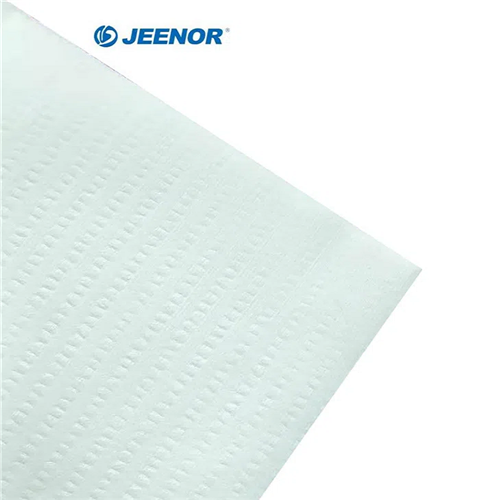
Conclusion
In conclusion, EcoCare Flushable & Biodegradable Nonwoven has proven to be an environmentally friendly alternative to traditional nonwoven materials. Its composition and materials promote biodegradation, reducing plastic waste and its impact on the environment. The material has demonstrated its compatibility with existing wastewater treatment systems, breaking down effectively during the treatment process and leaving minimal residue.
Field studies have also shown that EcoCare Nonwoven degrades in marine environments without causing harm to marine life, further supporting its eco-friendliness. These real-world examples highlight the positive environmental impact of this innovative material.
However, there are still concerns and challenges that need to be addressed, such as misconceptions about flushable products and the need for regulatory certifications. Continued research and development in this field can help overcome these challenges and pave the way for more sustainable alternatives.
In the future, the use of EcoCare Flushable & Biodegradable Nonwoven and other similar materials can have significant implications for environmental sustainability. By reducing plastic waste and minimizing pollution, these materials contribute to a cleaner and more sustainable planet.
Summary of the environmental impact of EcoCare Nonwoven
EcoCare Flushable & Biodegradable Nonwoven has shown promising environmental benefits in terms of reducing plastic waste and minimizing its impact on water systems and marine life. Its composition and materials promote biodegradation, allowing it to break down effectively during wastewater treatment and leave minimal residue. Field studies have also demonstrated its ability to degrade in marine environments without causing harm to marine life. These findings highlight the positive environmental impact of EcoCare Nonwoven.
Despite these benefits, there are concerns that need to be addressed, such as misconceptions about flushable products and the need for regulatory certifications. However, continued research and development in this field can help overcome these challenges and pave the way for more sustainable alternatives.
In conclusion, EcoCare Flushable & Biodegradable Nonwoven offers a promising solution to environmental issues associated with traditional nonwoven materials. By reducing plastic waste and minimizing pollution, EcoCare Nonwoven contributes to a cleaner and more sustainable planet. Further advancements and widespread adoption of such eco-friendly materials can have significant implications for environmental sustainability.
Future implications and sustainable alternatives
As the environmental impact of traditional nonwoven materials becomes increasingly apparent, the development and adoption of sustainable alternatives like EcoCare Flushable & Biodegradable Nonwoven hold great promise for the future. The use of EcoCare Nonwoven can significantly reduce plastic waste and minimize pollution in water systems and marine environments, contributing to a cleaner and more sustainable planet.
In the coming years, it is crucial to continue investing in research and development to further enhance the eco-friendliness and performance of flushable and biodegradable nonwoven materials. This includes addressing concerns about misconceptions regarding flushable products and working towards obtaining regulatory certifications to establish the credibility and reliability of eco-friendly options.
Moreover, sustainable alternatives like EcoCare Nonwoven pave the way for a circular economy, where materials can be reused, recycled, or composted at the end of their lifecycle. By promoting the use of biodegradable and compostable materials, we can make significant strides towards a more sustainable and environmentally responsible future.
Ultimately, widespread adoption of eco-friendly alternatives like EcoCare Nonwoven can lead to a significant reduction in plastic waste, preserve water systems and marine life, and contribute to a healthier and greener planet for generations to come.



